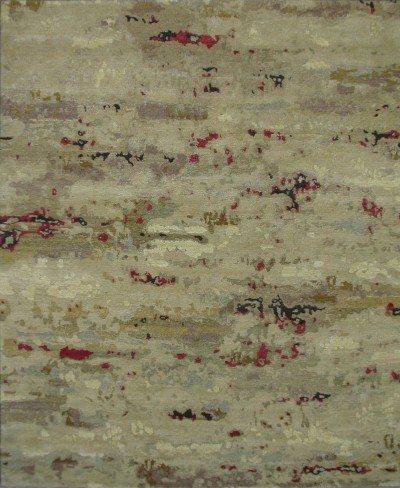Home Page › About Us › How Our Rugs are Made
How Our Rugs are Made
Production Process – From the idea to your home!
-
From Tibetan sheep herders to the loom
First, we start by selecting the finest wool from Tibet. We can maintain the high quality of our wool by completing the entire process by hand. To produce a handknotted Tibetan rug there are many intricate steps involved, each requiring a high level of technical expertise, precision and inspiration. We ensure quality hand- carding, hand-spinning, hand-dyeing, and hand-knotting. We use the same style of hand-knotting that was used hundreds of years ago in ancient Tibet. Using these traditional methods results in the creation one of the finest rugs in the world and it will last you and your family for several generations.
-
Wool
Mila Rugs guarantees that our wool comes only from Tibetan sheep that are raised in the high mountains of the Himalaya and are known for producing the finest quality wool. It is lustrous, naturally resilient and rich in lanolin that naturally protects it from damage caused by typical wear and tear.
-
Washing, Drying and Sorting
After shearing, the wool is gently washed and dried naturally under the sun. Once it is dried it is sorted according to the naturally occurring color variations.
-
Carding & Spinning
After the wool is sorted, it is hand-carded to align the fibers and to remove any short fibers or remaining debris. The carded wool is then hand spun into a yarn.
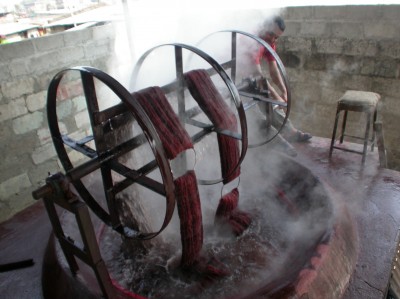
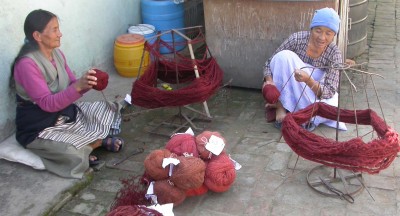
-
Dyeing
Once the wool is spun into a yarn, it is hand-dyed in small batches in large pots. The process of pot dyeing creates a natural variation of color shade in the yarn. This process produces rugs that are naturally, beautifully irregular.
-
Weaving
The next step is to weave the rug by following the patterns shown on a full-size graph. Depending on the size of the rug, there could be four to five weavers working on one rug knot-by-knot for hundreds of hours. The more intricate the design the more knots per square inch. The more knots per square inch the more time it takes to produce your rug.
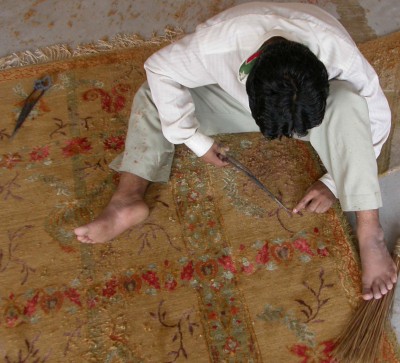
-
Carving
Once the rug is woven, it is trimmed and detailed by light carving that can accentuate the design.
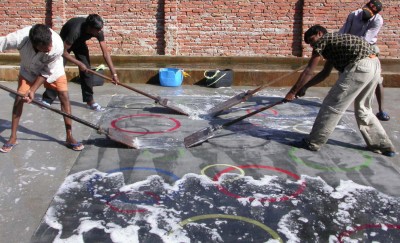
-
Washing & DryingThe final step is to wash the rug and let it dry naturally in the sun before it is shipped to our facility in Boulder, or directly to you—the customer, or to a retailer near you.

